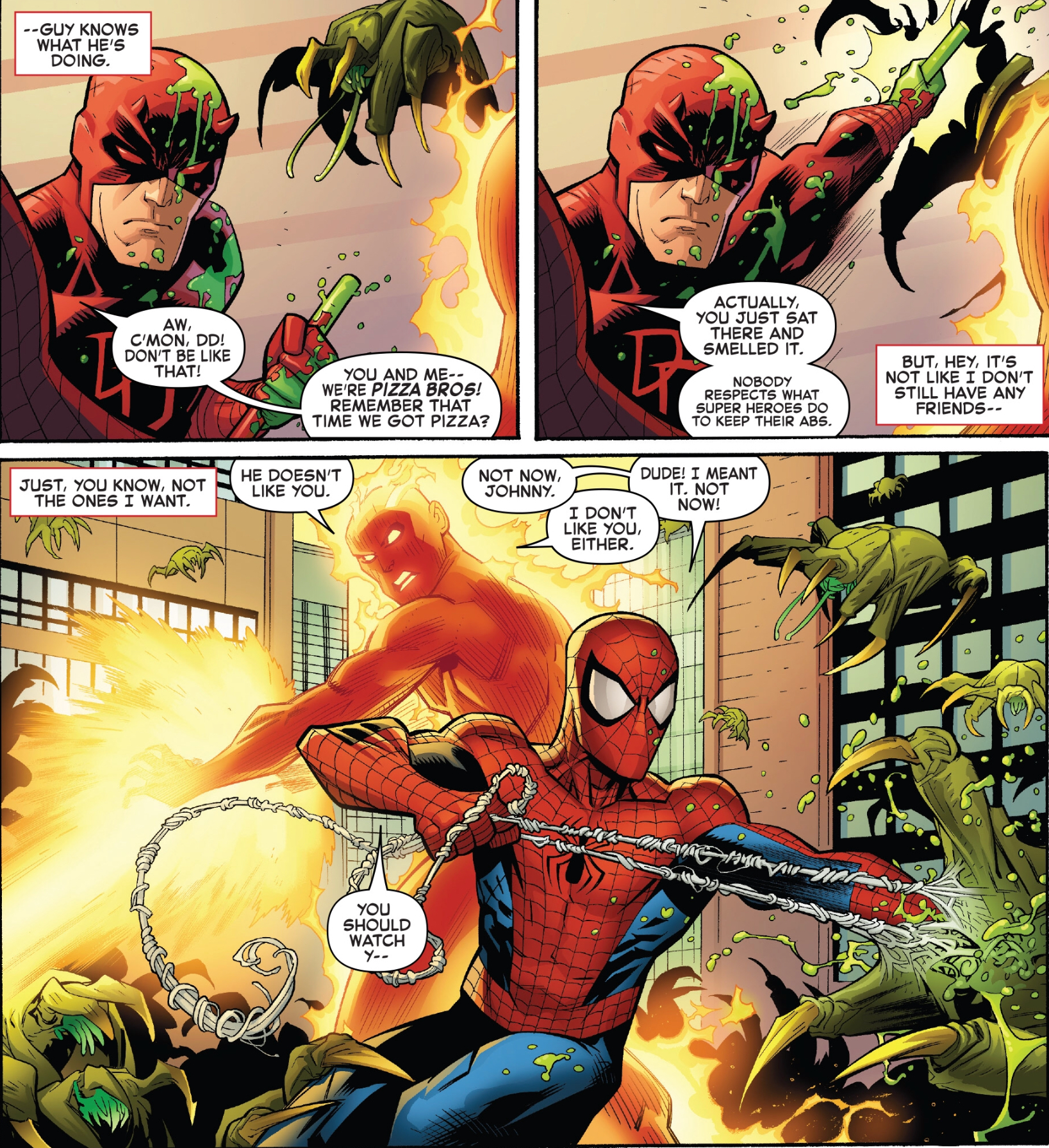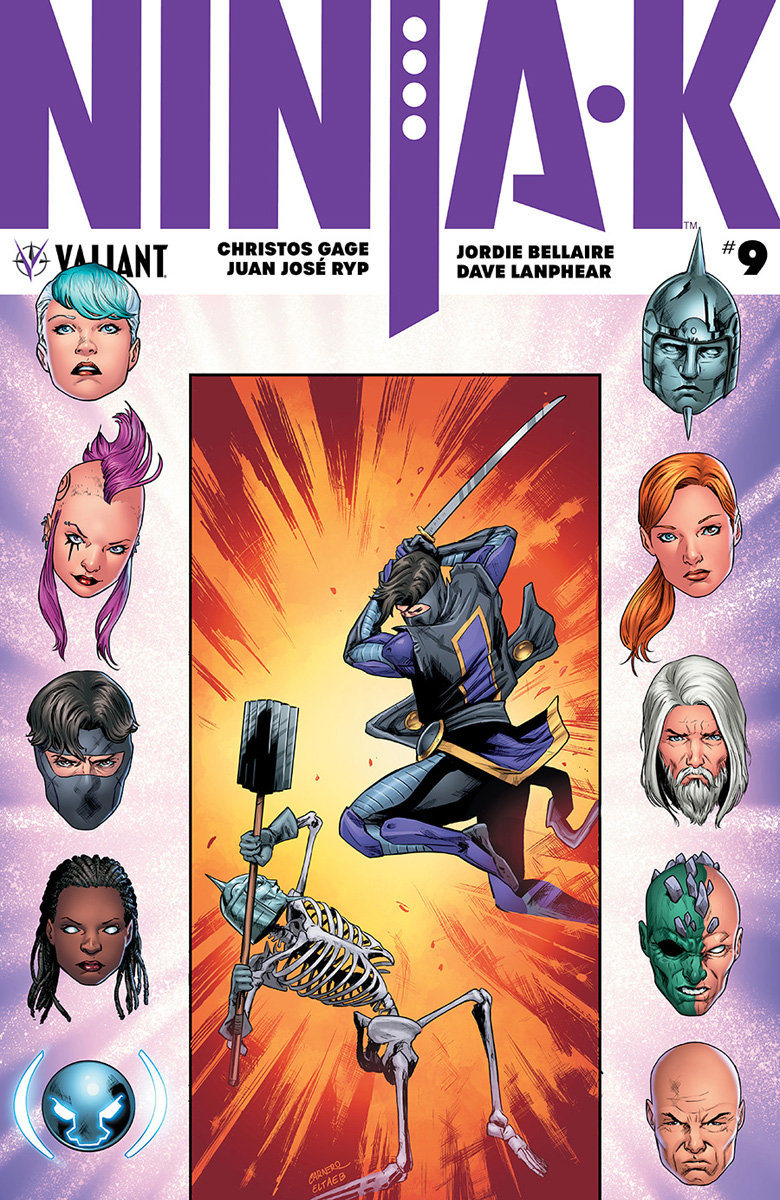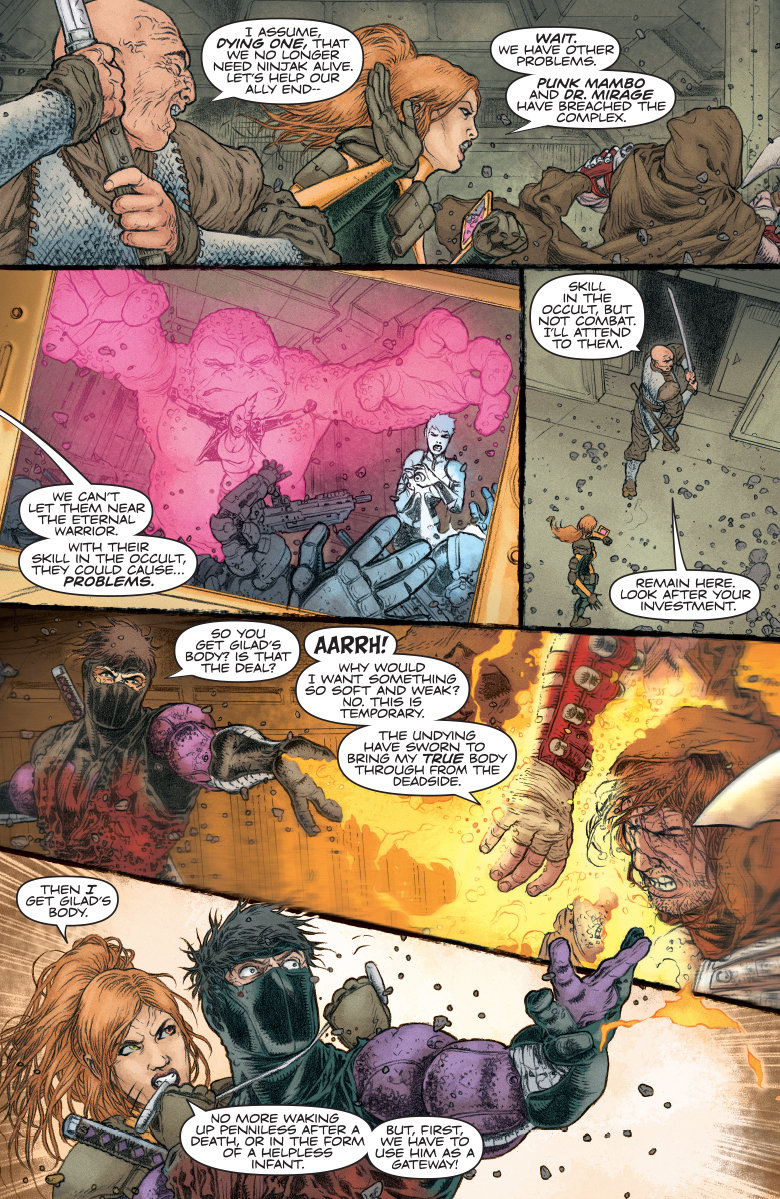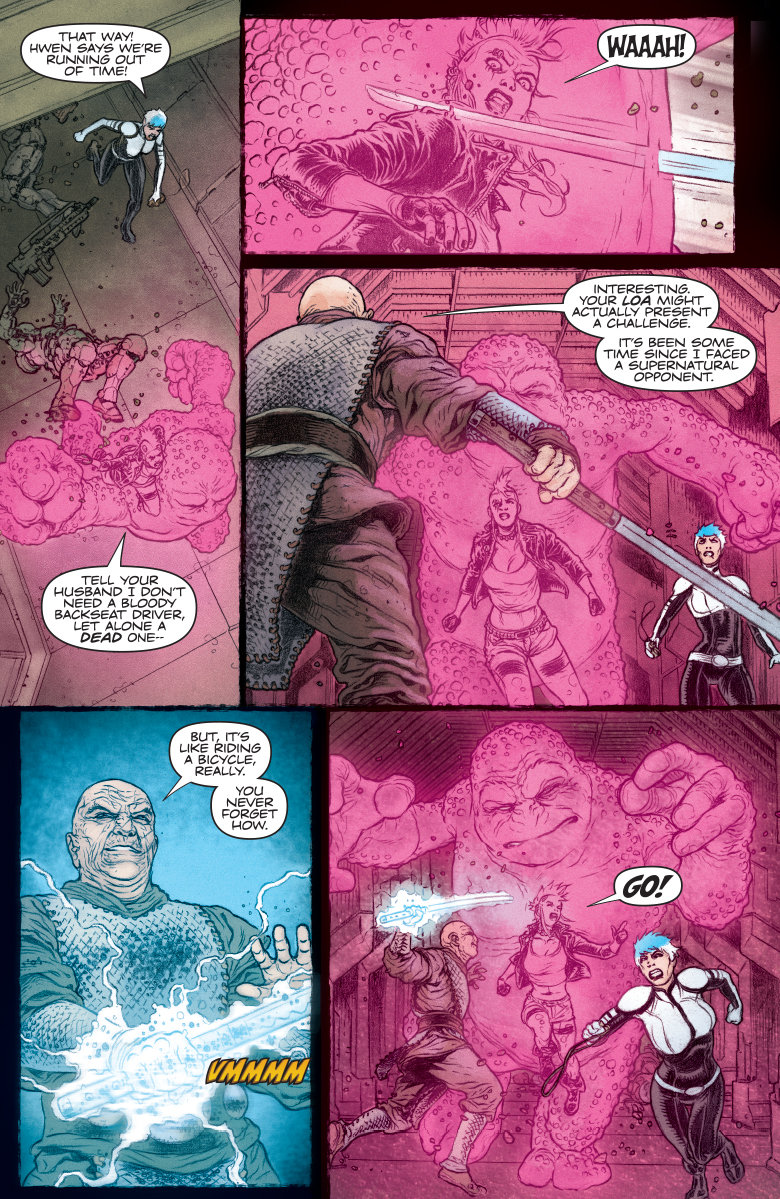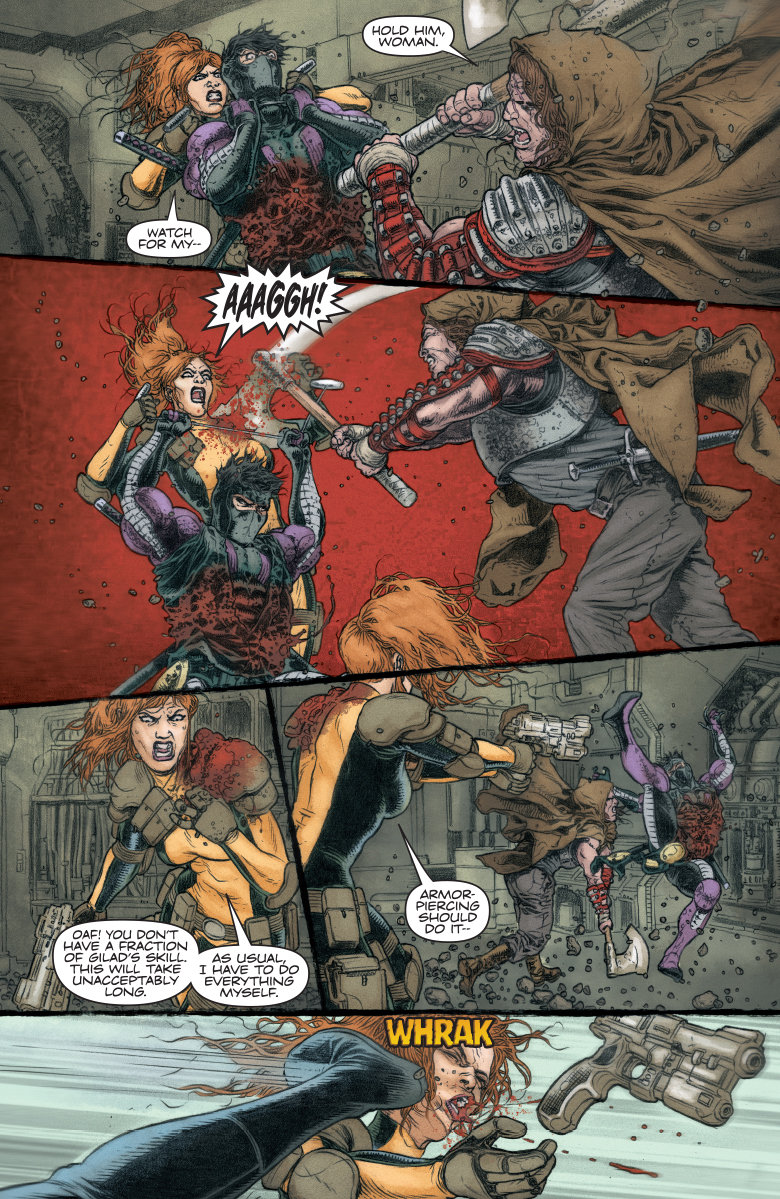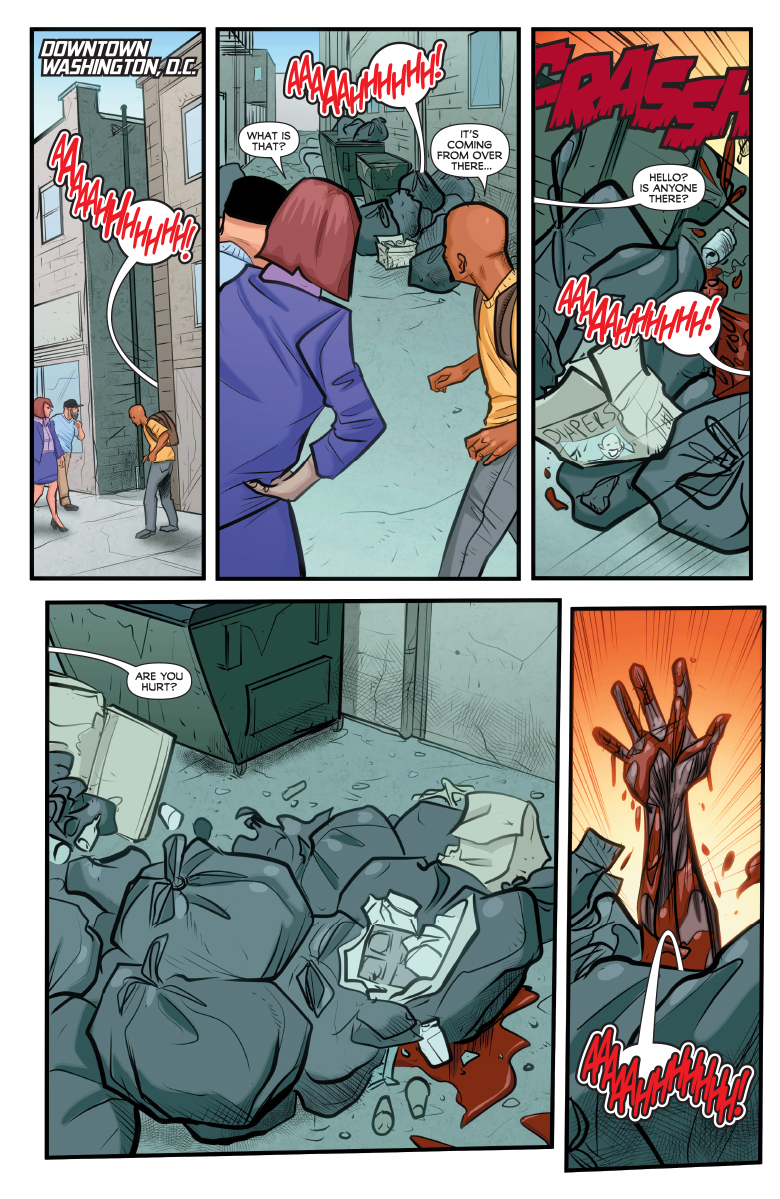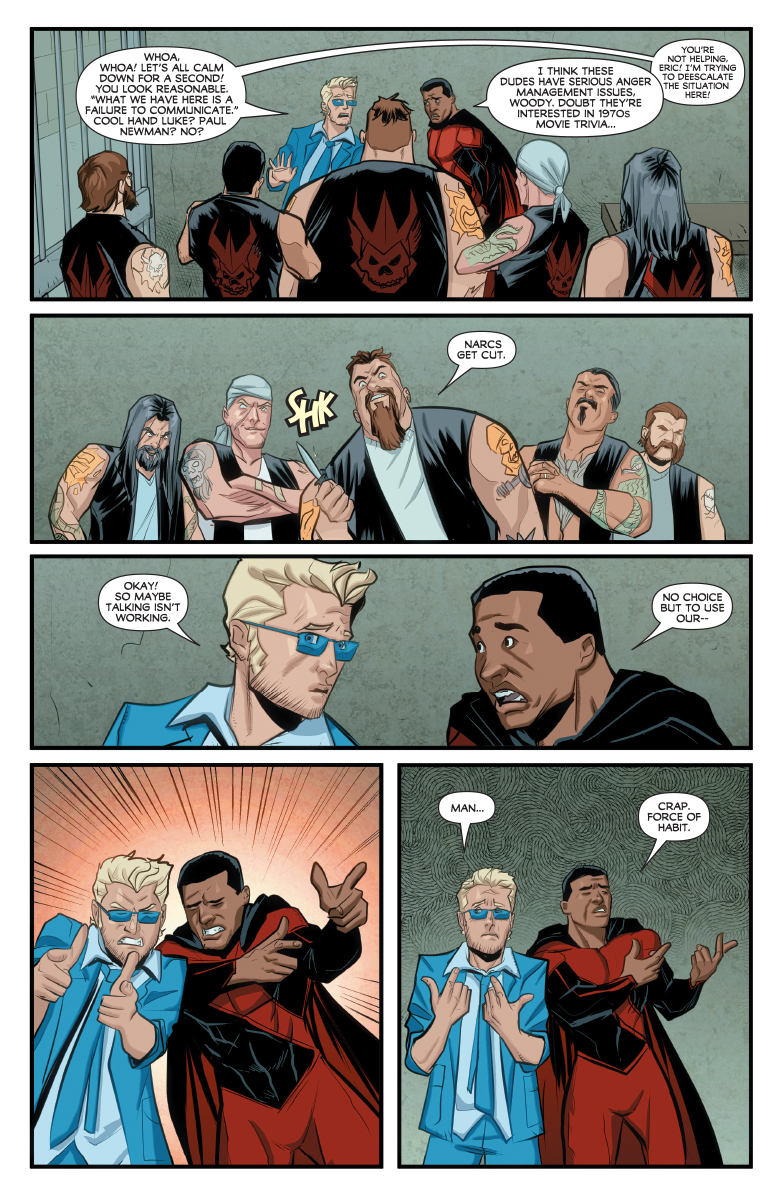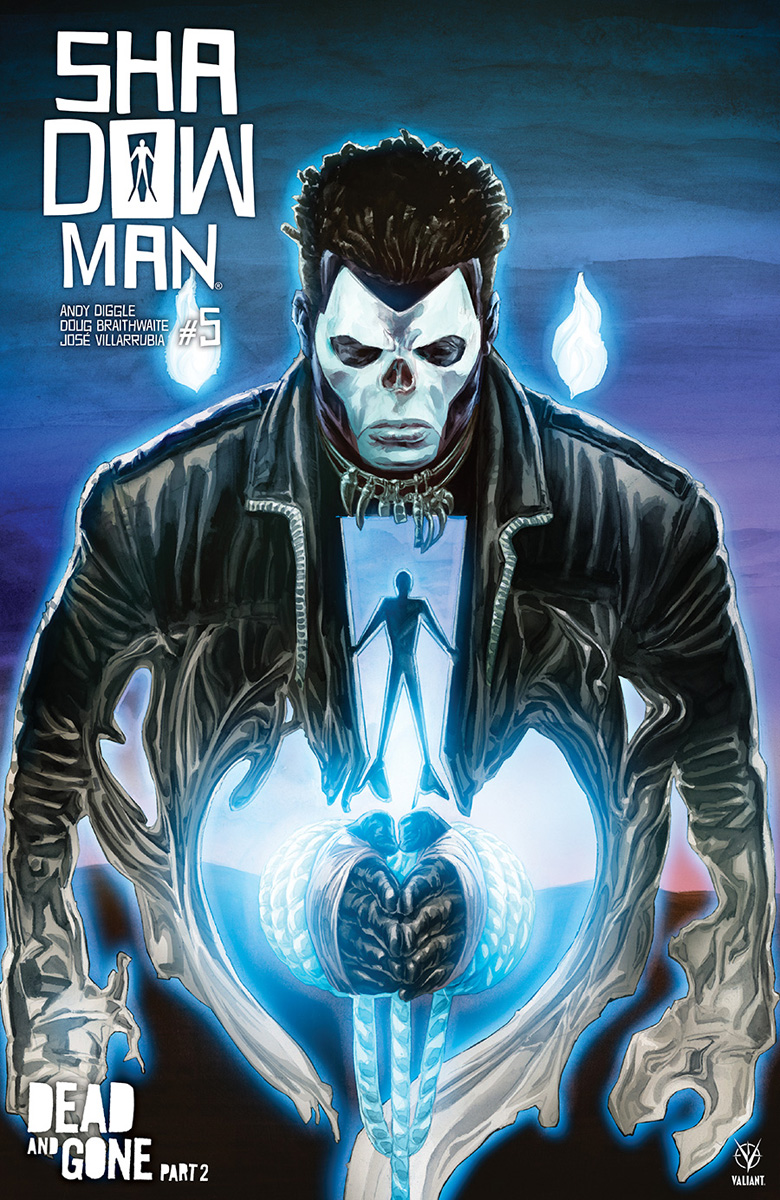REVIEW: Wonder Woman #51 by Steve Orlando, Laura Braga, & Romulo Fajardo, Jr.
This epic panel from Wonder Woman #28 is recreated this issue to great effect.
By Zack Quaintance — Steve Orlando and Laura Braga open their standalone story in Wonder Woman #51 by diving back into a past issue, one in which Diana faced grave danger. They open with a panel recreated from Wonder Woman #28 by Shea Fontana & David Messina, wherein the villainous speedster Mayfly has stuck a gun into Diana’s abdomen and begun to taunt her, asking rhetorically if she’s fast enough to stop a bullet fired at point blank range before it tears through her skin.
Borrowing an opening like this is a bold choice, but it’s a choice that pays off wonderfully, given the panel is not only an interesting visual but also a tremendous starting point from which to unpack Diana’s otherworldly empathy and compassion, as this story goes on to do. The opening reminds us how dangerous and hardened Mayfly is, how if ever there was a foe for Diana to dispose of forever and write off as lost, it would be this one. I know I certainly would with anyone who posed such a threat to me. Diana, however, is a hero, and this story is relentless in its determination to explore the qualities and beliefs that govern her altruism.
I’m really hesitant to spoil anything at all about this issue, even a little bit—I think this is a comic everyone should experience fresh. I will say only that at the center of this story is Diana essentially playing a game of chicken with her own beliefs, not so much risking her physical form (although that does come into jeopardy, because, you know, this is still a superhero comic) but risking her world view, which as many of us have learned over the past two years or so is a painful thing to have shaken.
It’s a great concept for a Wonder Woman story, and the execution that follows is nigh-flawless. Again, not to give too much away, but simply put, this is one of the best issues of Wonder Woman I’ve ever read, ever, from the characterization, to the poetry of the exchanges between Diana and Mayfly, to the way visuals are used throughout.
And let’s talk about those visuals: in addition to how well Diana and her central beliefs are handled and explored, this comic succeeds on the power of the graphic storytelling techniques used by Orlando and Braga. I still don’t want to tip anything, so I’ll just say vaguely that there’s an excellent scene that juxtaposes the heroine's and villain's disparate backgrounds. Also, the form of this issue leans into a core strength of comics—the ability to make fitful yet sensical leaps through time.
Finally, I also want to point out that this book has an ending that was so poignant it nearly brought me to tears. It’s that good.
Overall: This is one of the best standalone issues of Wonder Woman I’ve ever read, ever, and it tells a compelling story that speaks directly to the core of a classic and long-tenured character yet is also strikingly-relevant for 2018. This comic is 100 percent a must-buy. 10/10
Click here to read more of our recent reviews!
Zack Quaintance is a journalist who also writes fiction and makes comics. Find him on Twitter at @zackquaintance. He lives in Sacramento, California.

